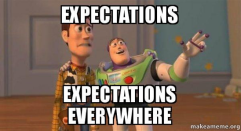Expected utility theory — nothing but an ex-hypothesis In mainstream theory, preferences are standardly expressed in the form of a utility function. But although the expected utility theory has been known for a long time to be both theoretically and descriptively inadequate, mainstream economists gladly continue to use it, as though its deficiencies were unknown or unheard of. What most of them try to do in face of the obvious theoretical and behavioral inadequacies of the expected utility theory, is to marginally mend it. But that cannot be the right attitude when facing scientific anomalies. When models are plainly wrong, you’d better replace them! As Matthew Rabin and Richard Thaler have it in Risk Aversion: It is time for economists to recognize that
Topics:
Lars Pålsson Syll considers the following as important: Economics
This could be interesting, too:
Lars Pålsson Syll writes Schuldenbremse bye bye
Lars Pålsson Syll writes What’s wrong with economics — a primer
Lars Pålsson Syll writes Krigskeynesianismens återkomst
Lars Pålsson Syll writes Finding Eigenvalues and Eigenvectors (student stuff)
Expected utility theory — nothing but an ex-hypothesis
 In mainstream theory, preferences are standardly expressed in the form of a utility function. But although the expected utility theory has been known for a long time to be both theoretically and descriptively inadequate, mainstream economists gladly continue to use it, as though its deficiencies were unknown or unheard of.
In mainstream theory, preferences are standardly expressed in the form of a utility function. But although the expected utility theory has been known for a long time to be both theoretically and descriptively inadequate, mainstream economists gladly continue to use it, as though its deficiencies were unknown or unheard of.
What most of them try to do in face of the obvious theoretical and behavioral inadequacies of the expected utility theory, is to marginally mend it. But that cannot be the right attitude when facing scientific anomalies. When models are plainly wrong, you’d better replace them! As Matthew Rabin and Richard Thaler have it in Risk Aversion:
It is time for economists to recognize that expected utility is an ex-hypothesis, so that we can concentrate our energies on the important task of developing better descriptive models of choice under uncertainty.
In his modern classic Risk Aversion and Expected-Utility Theory: A Calibration Theorem Matthew Rabin writes:
Using expected-utility theory, economists model risk aversion as arising solely because the utility function over wealth is concave. This diminishing-marginal-utility-of-wealth theory of risk aversion is psychologically intuitive, and surely helps explain some of our aversion to large-scale risk: We dislike vast uncertainty in lifetime wealth because a dollar that helps us avoid poverty is more valuable than a dollar that helps us become very rich.
Yet this theory also implies that people are approximately risk neutral when stakes are small … While most economists understand this formal limit result, fewer appreciate that the approximate risk-neutrality prediction holds not just for negligible stakes, but for quite sizable and economically important stakes. Economists often invoke expected-utility theory to explain substantial (observed or posited) risk aversion over stakes where the theory actually predicts virtual risk neutrality.While not broadly appreciated, the inability of expected-utility theory to provide a plausible account of risk aversion over modest stakes has become oral tradition among some subsets of researchers, and has been illustrated in writing in a variety of different contexts using standard utility functions …
Expected-utility theory is manifestly not close to the right explanation of risk attitudes over modest stakes. Moreover, when the specific structure of expected-utility theory is used to analyze situations involving modest stakes — such as in research that assumes that large-stake and modest-stake risk attitudes derive from the same utility-for-wealth function — it can be very misleading.
In a similar vein, Daniel Kahneman writes — in Thinking, Fast and Slow — that expected utility theory is seriously flawed since it doesn’t take into consideration the basic fact that people’s choices are influenced by changes in their wealth. Where standard microeconomic theory assumes that preferences are stable over time, Kahneman and other behavioral economists have forcefully again and again shown that preferences aren’t fixed, but vary with different reference points. How can a theory that doesn’t allow for people to have different reference points from which they consider their options have an almost axiomatic status within economic theory?
The mystery is how a conception of the utility of outcomes that is vulnerable to such obvious counterexamples survived for so long. I can explain it only by a weakness of the scholarly mind … I call it theory-induced blindness: once you have accepted a theory and used it as a tool in your thinking it is extraordinarily difficult to notice its flaws … You give the theory the benefit of the doubt, trusting the community of experts who have accepted it … But they did not pursue the idea to the point of saying, “This theory is seriously wrong because it ignores the fact that utility depends on the history of one’s wealth, not only present wealth.”
The works of people like Rabin, Thaler, and Kahneman, show that expected utility theory is indeed transmogrifying truth. It’s an “ex-hypothesis” — or as Monty Python has it:
This parrot is no more! He has ceased to be! ‘E’s expired and gone to meet ‘is maker! ‘E’s a stiff! Bereft of life, ‘e rests in peace! If you hadn’t nailed ‘im to the perch ‘e’d be pushing up the daisies! ‘Is metabolic processes are now ‘istory! ‘E’s off the twig! ‘E’s kicked the bucket, ‘e’s shuffled off ‘is mortal coil, run down the curtain and joined the bleedin’ choir invisible!! THIS IS AN EX-PARROT!!
